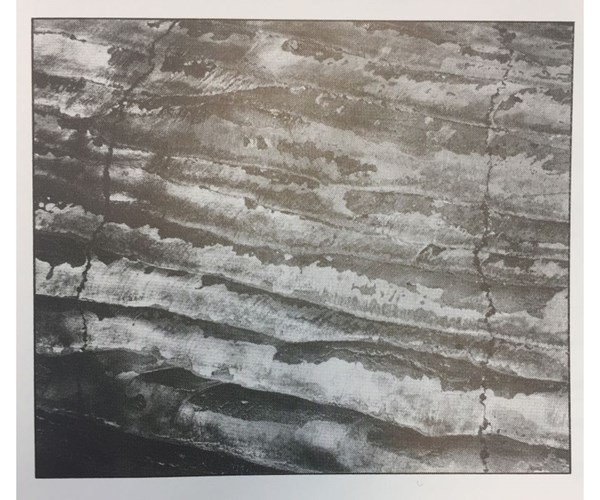Stress Cracks in Steel Bar Products
Micro-examination can help determine crack origin by noting orientation, intergranular nature, presence of scale, presence of subscale, and additional microstructural characteristics can reveal the thermal history of heating and cooling at the crack location.

Stress cracks on a conditioned billet.
“Stress cracks are defined as transverse or near transverse open crevices created when concentration of residual stresses exceeds the local yield strength at the temperature of crack formation. These stresses can be mechanically induced or can be attributable to extreme temperature differences and/or phase transformations. They can originate at almost any point in the manufacture of the steel.”– AISI Manual Detection, Classification, and Elimination of Rod and Bar Surface Defects
Stress cracks are often found visually at locations that experience bending or straightening. They are also referred to as “cross cracks” or “transverse cracks.” Originally, they were identified in mill billet and bloom products, prior to rolling.
Micro-examination can help determine crack origin by noting orientation, intergranular nature, presence of scale, presence of subscale, and additional microstructural characteristics can reveal the thermal history of heating and cooling at the crack location.
Excessive load during straightening can exceed the local yield strength of the material causing it to crack; reduce load applied by machine, or consider tempering or stress relieving material prior to straightening or further cold work.
Cooling too quickly can also induce stress cracks. Critical cooling rates are highly dependent on steel chemistry. Crack sensitive chemistries (medium carbon and high carbon steels; also medium and high carbon steels with straight chromium or straight manganese additions.) These steels should be slowly cooled through transformation temperatures to minimize the occurrence.
Design faults such as heavy sections adjacent to light sections and sharp corners; failure to fillet sharp corners; use of fillets rather than tapers; undercuts; overloading the material during fabrication, processing or application.
Detection of stress cracks is problematic as their transverse orientation makes them difficult to detect on equipment set up to detect longitudinal defects.
Final caveat: The term “stress crack” is arbitrarily defined based on industrial usage in the market. It does not necessarily imply anything about the specific metallurgical nature of the crack, I know that many people use “stress crack” to describe longitudinal cracks on steel bar products as well, which the AISI calls “Strain Cracks.”
This article was posted on speakingofprecision.com blog.


